Today is (well, it was!) Wednesday 6th February. We are programmed for yet another long bus ride, a couple of pagodas, a ferry ride across the Irrawaddy and a pony cart ride. Our decision was final. We were going to have a boat day! And very peaceful it was too (for us!). While (nearly) everyone was ashore, the boat was re-provisioned. Tons of supplies for the next cruise were brought aboard.
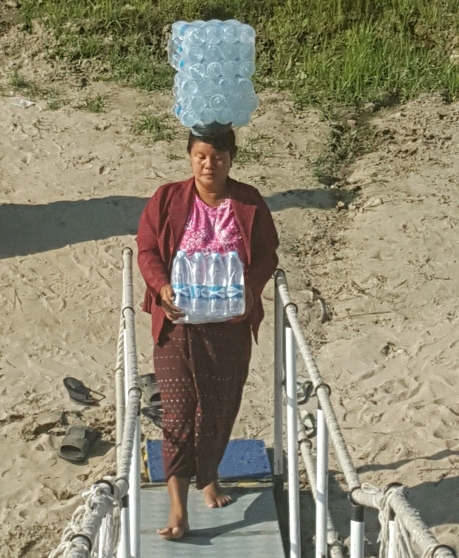
That evening we said goodbye to the crew because we are off to Inle Lake tomorrow.
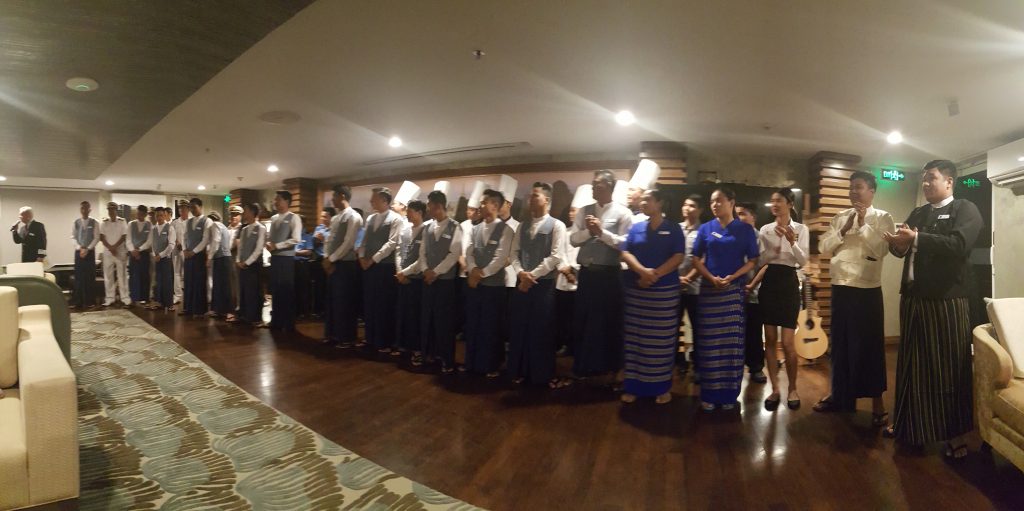
We discovered that Government rules dictate that all passenger ships, regardless of size, have to carry a minimum of 14 navigation crew. I have a feeling that this requirement is one of the factors making cruising on the Irrawaddy uneconomical.
A nice early departure with yet another opportunity to smash the toll barrier definitively, once and for all. It was enlightening to see the ladies taking our luggage off the ship balanced on their heads. … at sunrise!
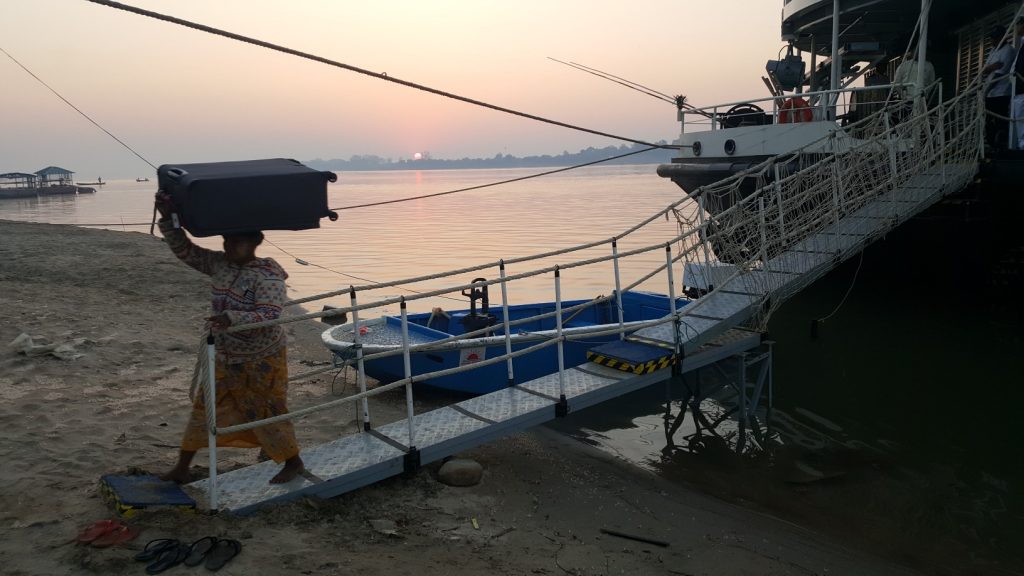
20 kgs apiece. Over the narrow wobbly gangplank and up the bank – wearing flip flops. And they did if for all our group’s 36 cases.
We have been learning Myanmar frantically. We can now say “good morning”, “hi”, “welcome”, “how are you?” – (all one expression!). We can also manage “thank you”. Plus we can also count from 8 to 8 – that’s pronounced “shit”. I think it’s also spelt that way too! “Chips” in Hetty-speak.
Well, it’s off to the airport for a quick flight to Heho.
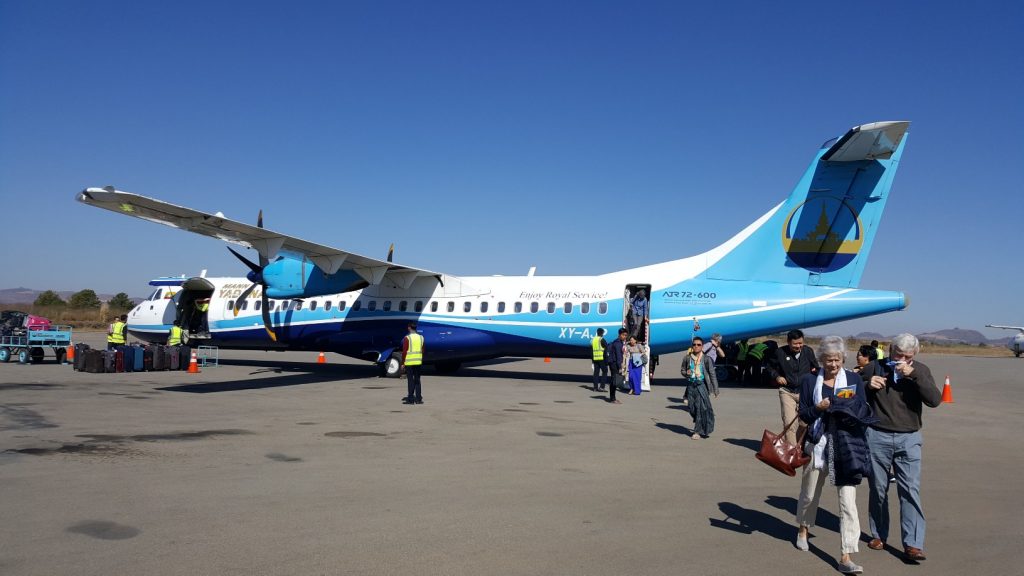
Minimal checks. No passports or photo ID required. No restriction of fluids. No weighing of cases. And only a very short flight. Into the high country – Heho is 3858 feet above sea level. The coach trip to Inle Lake took us back down the mountain. The roads here are way better than around Mandalay – apparently the local Government is very active in improving them. The housing looks more permanent here and there is definitely less rubbish lying about. (Of course “less” is a relative term!)
As we wound steeply down to the lake area we passed through a zone where the road was being upgraded to “motorway standard”. Two lanes both ways. Well, it will be soon! As we passed, gangs, mainly of ladies, were placing stones in a layer and covered with fine gravel then molten tar. All by hand. Later this was being hammered into place. The final stage involved a proper road laying machine. On the bends gangs of men were levering off fractured rock with crowbars to widen the road and straighten some of the bends. Others broke the rocks up with sledge hammers. Everyone wore flip flops or went bare-foot. Labour is cheap in these parts!
We were going to arrive early at the restaurant. So, it’s either a market or a pagoda! There wasn’t a convenient shoe-removal opportunity so it was another market for half an hour. More crowded spaces with low roofing.
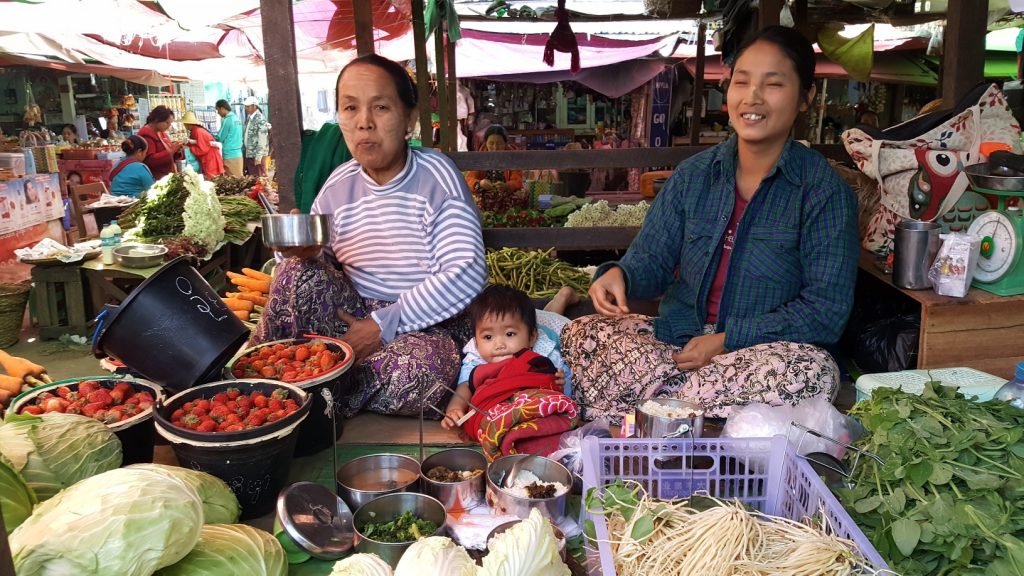
Tons more veggies and all sorts of exotic fruits. Loads of trinketty things that we couldn’t possibly want! Most of the “stuff” is delivered to the market by ox cart, trshaw and odd one-cylinder tractory type things which move slightly faster than the open- but not much and they make a hell of a noise!
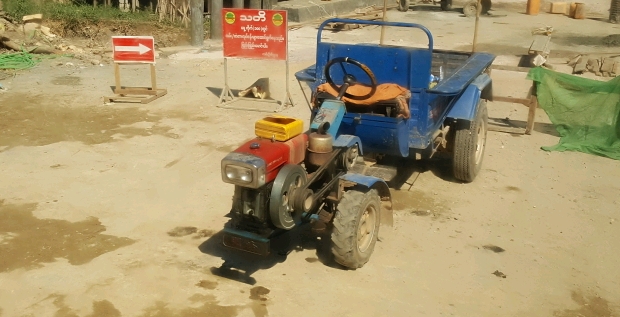
And on to the hotel on the lake. On the map it’s nestled neatly at the edge of the blue bit. However, when push comes to shove, (and the Chinese tourists sure know how to shove!), the edge of the blue bit is really maimly green.
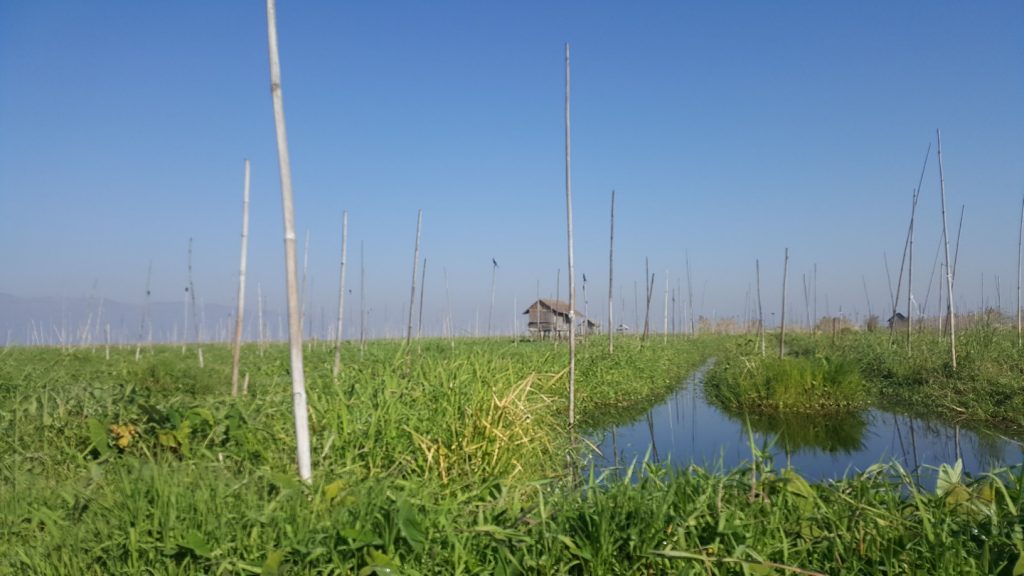
There is a mile or so of floating garden. Strips of weed mixed with sticks and mud anchored into the lake bed with bamboo poles. These gardens are used to grow mainly tomatoes and beans.
Each plot has a stilt house (or maybe a stilt shed).
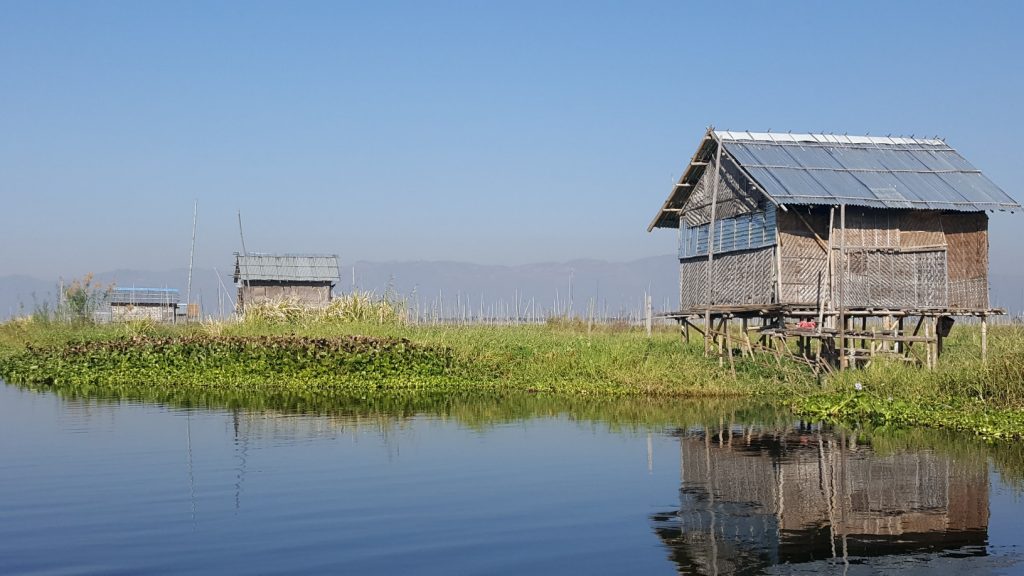
Each hut has a boat. It has to because there are no paths or roads out here.
These boats are long and thin and very shallow.
The little ones are powered by paddle often using their feet (to leave their hands free for fishing duties.). The middle sized ones have outboard-like engines with long shafts and propellers which just skim the water surface. The big ones have five seats in a row and in-board, one cylinder engines that run at about 100 revs per minute… bang, bang, bang, bang…
The REALLY BIG ones carry up to 20 locals in very cramped conditions with bigger, noisier engines.
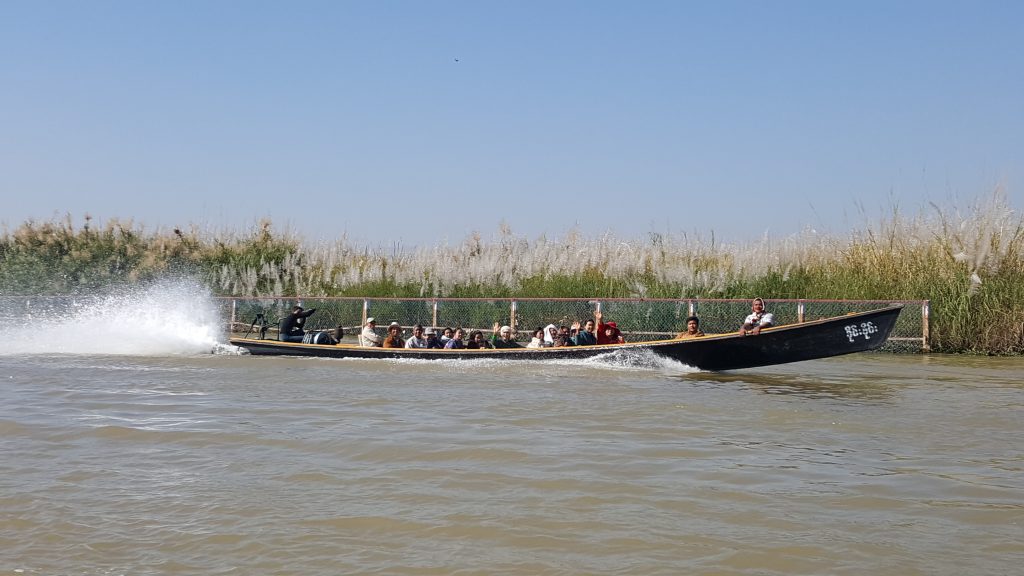
There is even a luxury quiet(ish) version with a four stroke engine with silencer. But these are rare.
We were collected by a fleet of four five-seaters for our exploration of the lake.
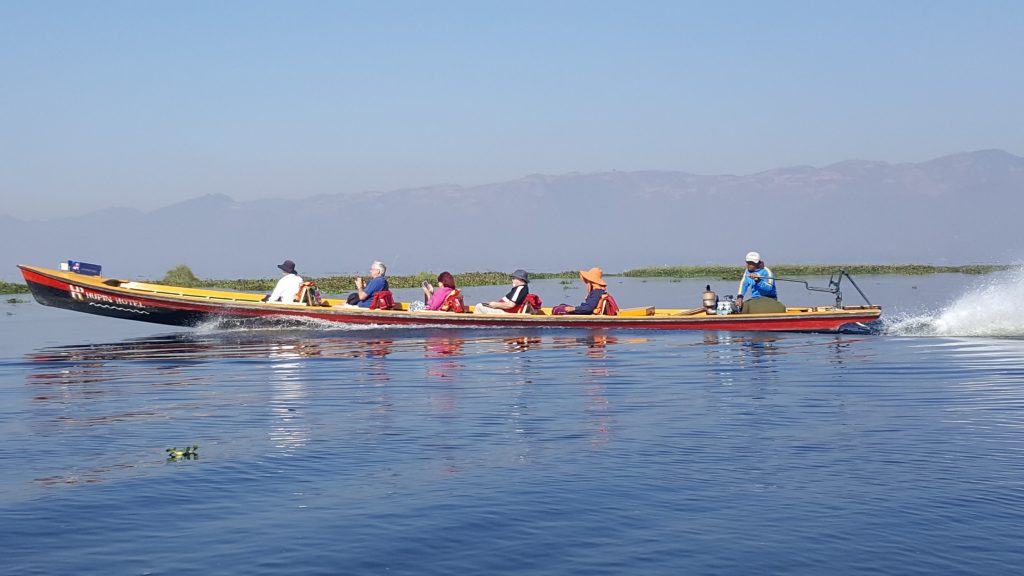
This add-on extension to the cruise was, in fact, one of the REAL highlights of this trip.
First, we had to navigate through narrow channels, past villages built completely over water.
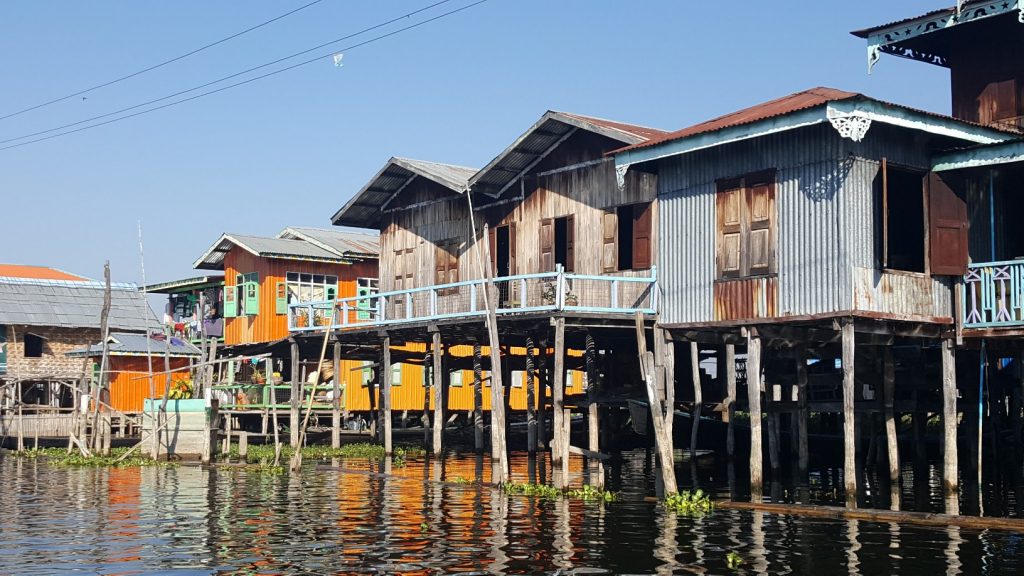
Past floating fields. Past people doing their washing, and generally going about their lives! Some houses had mains electricity supplied via a series of wooden pylons. Many didn’t. Some appeared to have water supplied by blue alkathene pipes. Just don’t even think about their drainage system. I guess “non-existent” would probably cover it. OK. Let’s not dwell on the obvious. Just don’t drink the lake water!
Every entrance to every watery space had bamboo barriers floating on the water surface. These were to keep the water hyacinth from spreading. Too little, too late. It’s already everywhere.
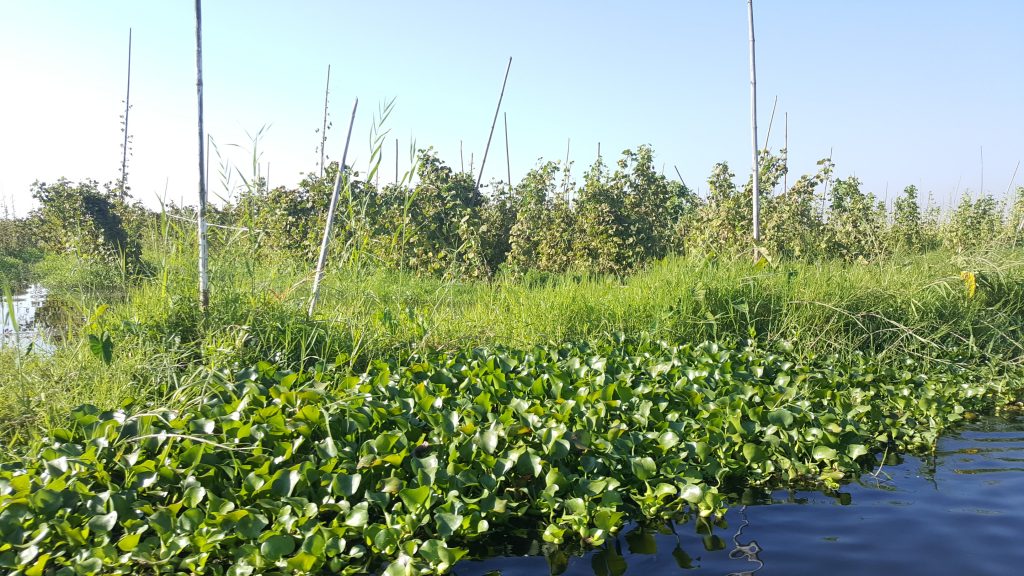
A sure sign of pollution by nutrient enrichment. Maybe the lake has another 10 years lifespan. Apparently, the water level is already dropping. That combined with spreading weed will cause massive problems. The place might become a victim of it’s own success!
After a mile or so, we emerged into open water. Zooming across the lake with dozens of other boats, we passed a lot of locals fishing with trammel nets. Standing precariously on the bows of their little craft and rowing with their feet while recovering their nets by hand.
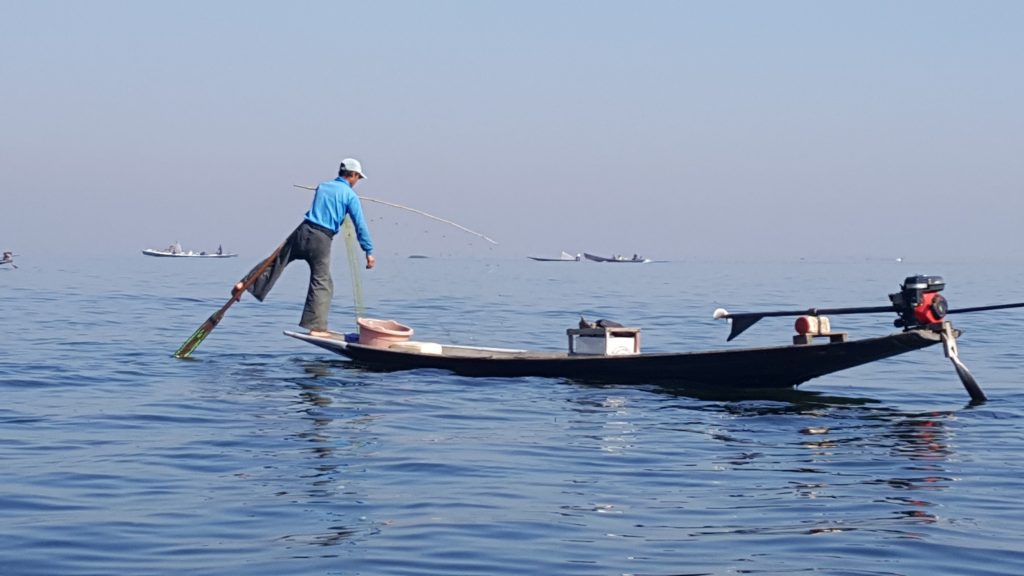
We saw quite a few fish being caught. Apparently the local name for these is “crap fish”. One guy told us he had caught 88 fish! (If you follow my Myanmar.)
Another group of fishermen were using the traditional fish traps.
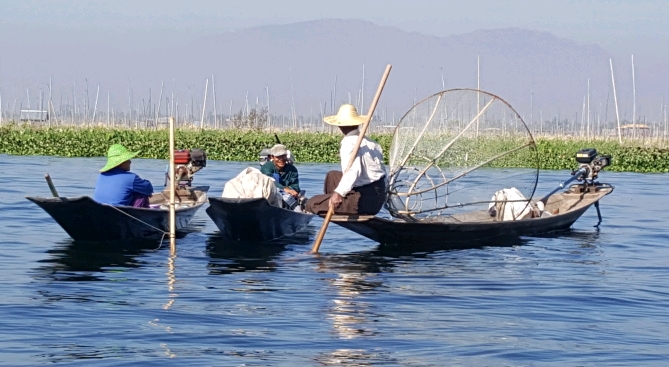
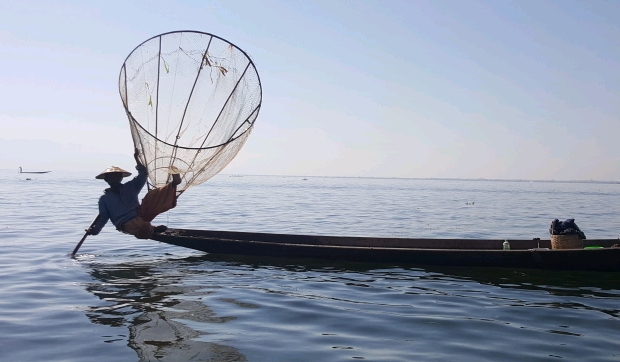
These bamboo contraptions are dropped into the water and pushed to the bottom. Spears are then used to catch any trapped fish. My guess is that they were really just showing off their skill for tourist dollars!
Of course, this is still Myanmar, so there is still the opportunity for another temple – 500 Kt for permission to use cameras inside.
But that’s enough for now…
The clerics.
An imam, a bishop and a rabbi were contemplating what they would like to be said at their funerals.
The imam suggested the following: “He did an enormous number of good deeds and worked tirelessly for the good of his community.”
The bishop wanted: “He worked with total commitment to bring together all the various religious groups in his city.”
The rabbi wanted people to say:
“Look, he’s still breathing!!!”
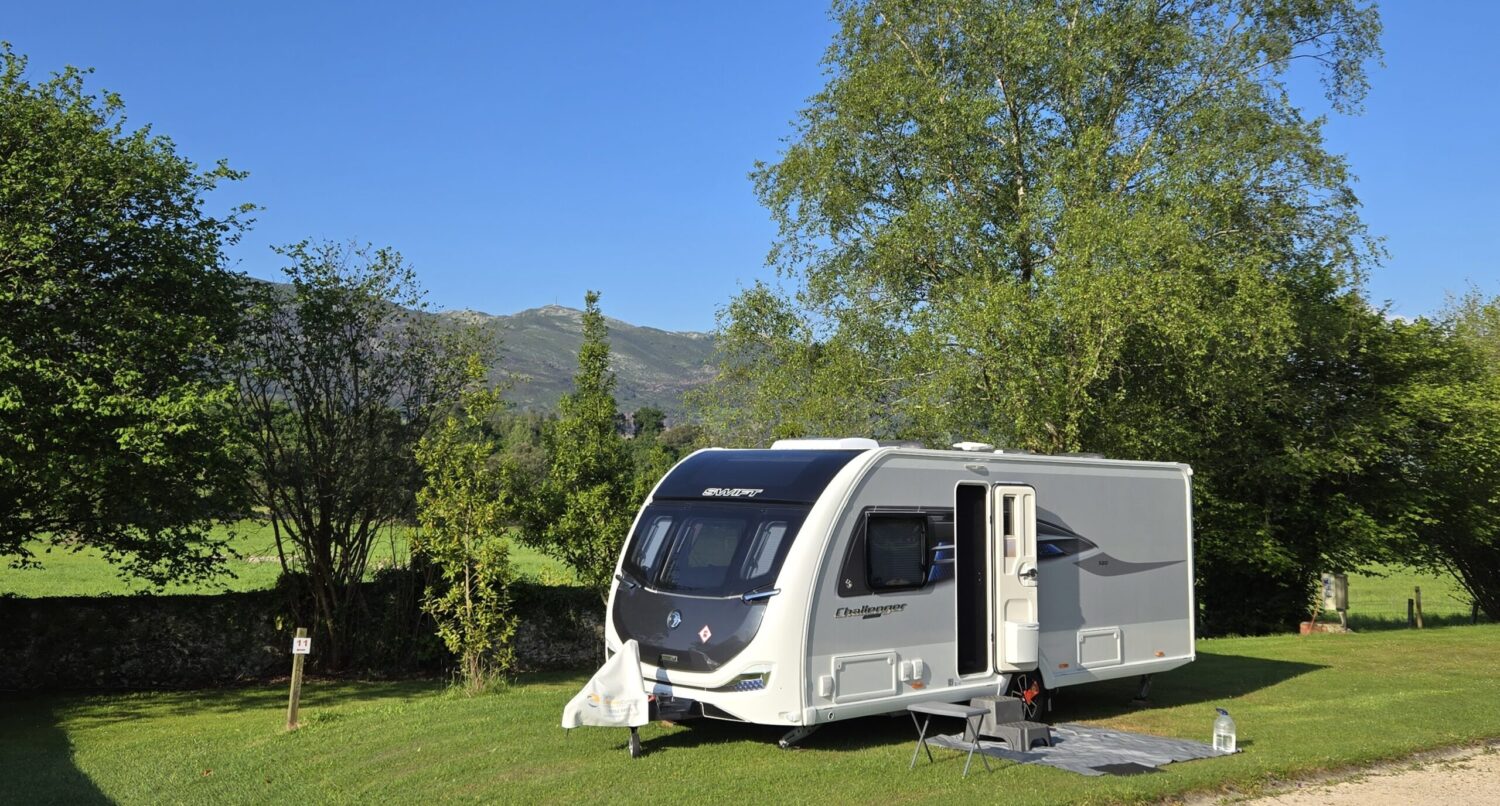
Picked 14 up at 1500 on the 16th John. We were getting worried having heard little for about a week. Imagined hijacking, sinking or another lost phone. We had no plans to pay any ransom.